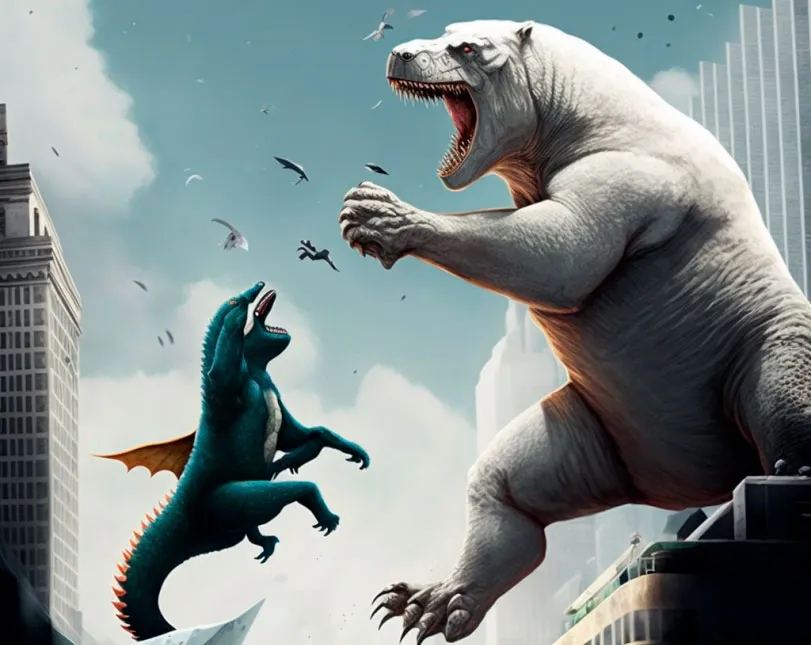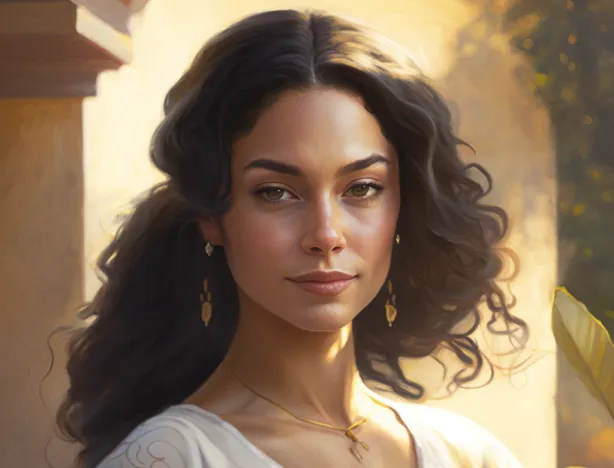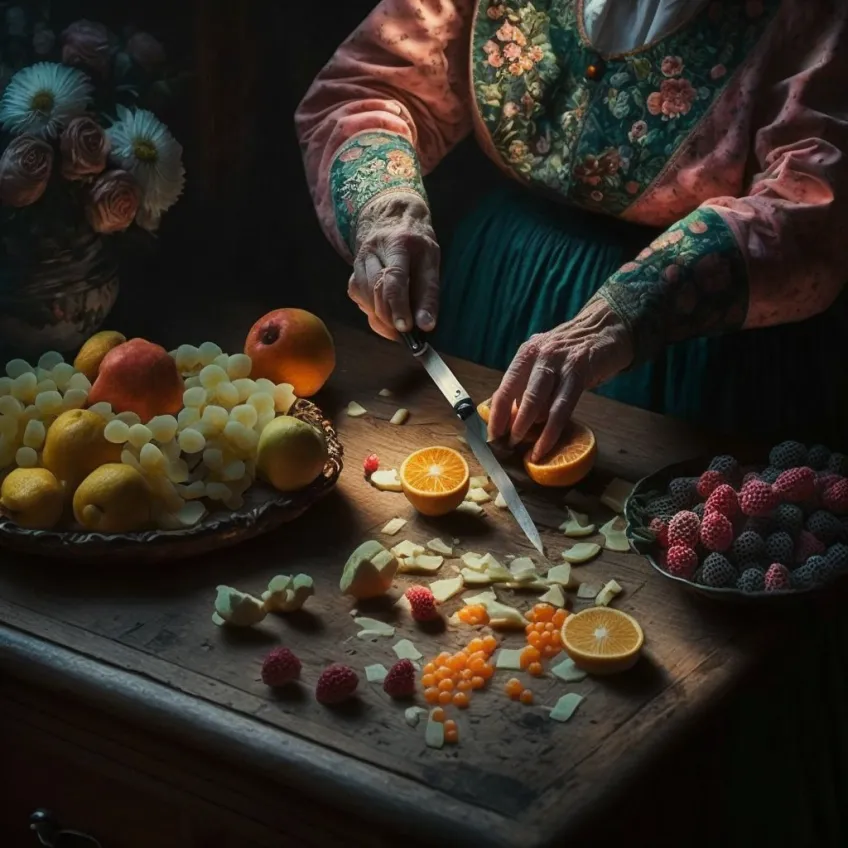Artificial intelligence has fundamentally changed the world of art in the last year. Thanks to a host of AI art programs, anyone is able to create whatever image their imagination can produce with just a simple worded prompt.
While a sea of these generators have appeared, one has quickly risen to the top known as Midjourney. Gothic in nature, this program offers a level of realism that is yet to be competed with.
While it isn't without its controversies, Midjourney has drastically pushed the limits of AI art generators, releasing frequent updates with new skills, techniques and advancements in its training database.
So what is Midjourney? How do you use it? And is this standing out as the future of the art world?
What is Midjourney and what can it do?
Midjourney is one of the many AI image generators that have emerged recently. Unlike Dall-E 2 or some of its other competitors, Midjourney offers a more dream-like arty style to your requests.
It will likely appeal to those working within science-fiction literature or artwork that requires a more gothic feel. Where other AI generators lean more towards photos, Midjourney is more of a painting tool.
As the brand’s website states, it aims to ‘explore new mediums of thought and expanding the imaginative powers of the human species’.
Read more:
- ChatGPT: Everything you need to know about OpenAI's GPT-3 tool
- Why AI-generated hands are the stuff of nightmares, explained by a scientist
- Point-E: How OpenAI’s Dall-E successor uses AI to sculpt your 3D dreams
Midjourney asks you to input a worded prompt for an image, for example ‘a fox wearing a top hat in the style of a Roald Dahl illustration’ and in a few seconds, you’ll be returned multiple attempts at this image.
Things can go wrong with your image and the model isn’t perfect. For example, it can struggle to generate hands or other complicated objects, and backgrounds can often be blurred or confused, but these are problems you’ll find with any of these models.

Midjourney latest features
Pan feature

Midjourney's latest feature is known as 'pan'. This allows a user to click a set of arrow buttons to extend their image in any direction. This also comes with a feature known as 'remix' which will change the prompt each time you extend the image outwards.
Turbo mode
For two times the price, Midjourney will offer turbo mode, creating images at four times the speed. With the sizeable increase in price, this will only really be necessary for heavy users of Midjourney.
Repeat and permutations
For Pro users of Midjourney, there are features known as 'repeat' and 'permutations'. Between these two tools, any user is able to create up to 64 images simultaneously and ask for up to 40 combinations of prompts in a single query. For example, asking for a (art deco, oil painting) of a (ninja, wizard, priest) giving a mix of these prompts all in one go.
Describe
AI art generators, in their most basic form, are turning words into art. One of the newer features Midjourney added to its platform is the ability to reverse this. This lets any user transform images into words. Simply put in your own image and Midjourney will give you a vivid description back. This is a helpful way to better understand how Midjourney conceptualises words for future prompts.
Midjourney version five - what's different?
The team behind Midjourney have been consistently updating the software since it was first launched. They are now on the fifth iteration.
This, in the team's own words, offers higher image quality, more diverse outputs, wider stylistic range, support for seamless textures, wider aspect rations, better image promoting, and dynamic range.

That is a lot of somewhat vague changes, but in essence this is a focus on higher levels of detail in images. Raindrops, the iris of an eye, or the background of a mountain will all be more hyper realistic. This will allow for more detail to be extracted from more detailed prompts where the model would previously leave extra information out.
This is the version of the model that is now available to all users.
How can you sign up for Midjouney?
Midjourney works slightly differently from most AI tools. While you can sign up directly through the company’s website, using the software will require you to download and use Discord – a chat forum-style app.
Once you’ve been accepted onto Midjourney’s Beta, you’ll be sent an invite to the Midjourney Discord. This can seem pretty confusing if you haven’t used anything similar before but the basics are easy.
You get 25 free queries and then, if you want to keep using the software, you need to sign up for a paid membership (costing between $8 and $60 a month depending on the plan you choose).
When you’re in the Discord, simply head to any of the ‘newbie’ channels listed on the left-hand side. Then, type ‘/imagine’ followed by your desired prompt. The bot will respond with four versions of this prompt within a minute.
You can choose to get alternative versions of any of these images, or to upscale one of them to a larger, higher quality image.
In these bot channels where you request your images, other people will also be making requests. It can get a bit hectic in there so keep track of where your image is.
You can see any image you have requested on the Midjourney website.
How does Midjourney work?

For most of the major AI image generators, the creators have offered reams of information on how they work, along with publishing their source code - this isn’t the case for Midjourney. The team behind it have kept somewhat quiet on its background and training.
However, it is most likely that Midjourney uses a similar system to both Dall-E 2 and Stable Diffusion, especially as both companies have explained their training methods in detail.
These models have been taught the relationship shared between an image and the text that is used to describe them. Midjourney has stated in the past that, like its competitors, it scraped the internet for images and text to describe them, using millions of published images for training.
The majority of AI image generators with public source code generate these images through a process known as diffusion. Essentially, these models work by adding noise to an image, reducing it to a pixelated mess.
It then learns to recover this data by reversing the noising process. This process is repeated over and over again, training the model to add noise and then remove it again. The model can then apply the denoising process to create realistic images by making small variations to the image.
This is paired with the model’s understanding of the relationship between an image and the text used to describe it, helping AI image generators to understand what you are asking for with your prompt.
Not all plain sailing

Like its competitors, Midjourney is not without criticism. There are concerns over copyright, especially since the founder admitted they didn’t receive consent from the creators of the art the model was trained on.
With millions of images needed for a model of this size, this would mean copyright infringements in the millions.
This has resulted in both Midjourney and Stable Diffusion getting caught up in a lawsuit brought forward by a team of artists.
"It’s [the dataset] just a big scrape of the Internet. We use the open data sets that are published and train across those. I’d say that’s something that 100% of people do. We weren’t picky," says David Holz, founder of Midjourney, in an interview with Forbes.
In the future, Midjourney are hoping to be able to offer artists the ability to opt out of their images being used in the future.
"The challenge now is finding out what the rules are, and how to figure out if a person is really the artist of a particular work or just putting their name on it," says Holz in his interview with Forbes.
"We haven’t encountered anyone who wants their name taken out of the data set that we could actually find in the data set."
In a recent update, the Midjourney team announced that they will now be producing a magazine. This will feature a selection of artwork curated from the 10,000 most highly rated images.
Along with this, the Midjourney magazine will also include interviews with Midjourney community members, talking about their prompts, how they use Midjourney in their creative process and more.
The magazine publishes monthly and will cost $4 a month. There does, however, remain some questions around the copyright of the images used within the magazine, falling into a grey area of copyright law.
Read more:
